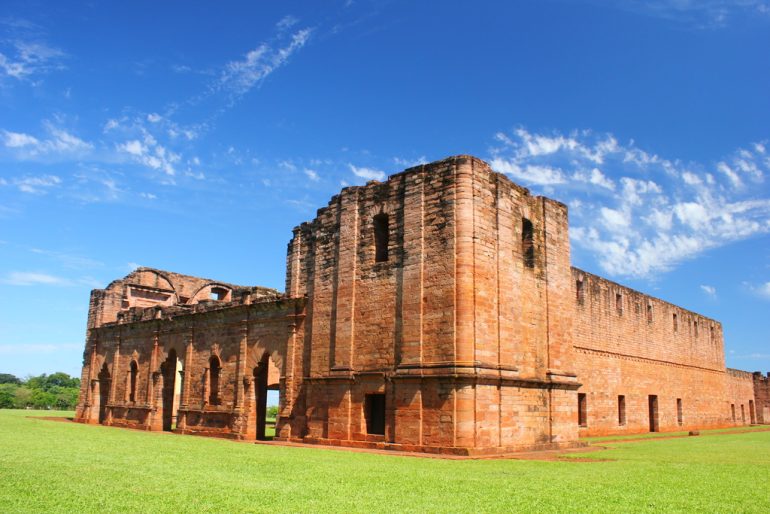Itapúa tourism is receiving a significant boost after the National Secretariat of Tourism (Senatur) announced an investment of more than Gs. 2,248 million (approximately US$311,000) to modernise the tourism infrastructure of the department, in the south of Paraguay. This initiative seeks to strengthen the region as a key destination for cultural and religious tourism, highlighting the Jesuit Missions of Jesús de Tavarangüé and Santísima Trinidad del Paraná, both declared UNESCO World Heritage Sites.
A historical and cultural legacy
The Jesuit Missions of Itapúa constitute one of the most important testimonies of the fusion between Guaraní and European cultures in the eighteenth century. These settlements, organised by Jesuit missionaries, were not only intended for evangelisation but also functioned as self-sufficient communities, with systems of agricultural production, artisan workshops, schools, and spaces dedicated to musical and artistic training.
The Mission of Jesús de Tavarangüé, founded in 1685, stands out for the grandeur of its unfinished temple, which, had it been completed, would have been one of the largest in South America. Its standing stone arches and walls allow visitors to imagine the scale of the project, which was interrupted by the expulsion of the Jesuits in 1768. Although never finished, it remains today one of the most impressive ruins of the group and was declared a UNESCO World Heritage Site in 1993.
The Mission of Santísima Trinidad del Paraná, founded in 1706, is considered the best preserved of all. Its central square, Baroque-style church, bell tower, and detailed stone carvings demonstrate the high level of artistic development achieved through the combination of European traditions and Guaraní craftsmanship. The site also includes a museum with original pieces that help visitors understand daily life in the reductions.
Both complexes are part of the so-called “Jesuit Route”, a cultural and tourist circuit that connects the principal remains of these communities in Paraguay, Argentina, Brazil, and Bolivia, offering visitors a historical journey that transcends borders.
Strategic investment in Itapúa tourism infrastructure
Paraguay has identified a potential demand of more than 1.5 million tourists interested in cultural and nature-based tourism. This study, supported by Senatur and the Inter-American Development Bank (IDB), highlights the growing interest in authentic and sustainable experiences that connect with local identity.
This has motivated the secretariat to increasingly seek compliance with international standards in tourism services. The announced investment will be allocated to improving the visitor experience and enhancing the cultural and heritage value of the area. Planned actions include the modernisation of access routes, signage, interpretation centres, and the implementation of technologies such as 3D video mapping, which allows for an audiovisual immersion into the history of the missions.
Itapúa as an emerging destination
With investment in infrastructure and the promotion of its historical heritage, Itapúa tourism is positioning itself as an emerging destination within the South American tourist circuit. The region offers a unique combination of history, culture, and nature, attracting both domestic and international tourists in search of new experiences.
This commitment to cultural tourism aims not only to preserve and highlight the legacy of the Jesuit missions, but also to generate economic development and employment in local communities. With institutional support and a renewed offer, Paraguay is projecting itself as a tourist destination of global interest.


